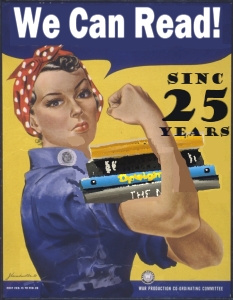 The Impossible Dead
The Impossible Dead
by Ian Rankin
Orion, 2011.
The second of Ian Rankin’s Malcolm Fox series sees the “complaints” (internal affairs) team sent from Edinburgh to the coastal town of Kirkcaldy, in Fife, to investigate three policemen who may have covered up the activities of their colleague, Paul Carter, recently convicted of extorting sex from women he’s arrested. As well as the usual passive-aggressive resistance from the police in the Kirkcaldy station, there are other strange aspects to the case, for example the person who reported Carter was his uncle, a retired policeman himself. While his two younger colleagues are trying to keep appointments with the policemen they have come to interview, Fox goes to visit the uncle who lives in an isolated cottage in the countryside.
As the official investigation is continually stalled by lack of cooperation, Fox becomes more interested in the original case against Carter. Soon, a death occurs that makes his antennae twitch even more. He’s led back to the 1980s, a time of global instability and, in Scotland, extreme protests, bordering on terrorism, by the nationalists. Many of these firebrands are now in power as the SNP (Scottish National Party) became mainstream and Scotland, with the help of the Labour government, achieved devolution. Back in the 1980s, though, there were demonstrations, riots and even packages of anthrax sent to prominent public figures. Involved in these events was a lawyer, Francis Vernal, who died in a car crash at around the time that the nationalists went mainstream. With the help of Vernal’s old friend, Fox begins to find out more about the history of those times, and seeks to find what really happened regarding the car crash, and what happened to some of the activists who vanished afterwards.
Fox is also concerned about his father, Mitch, who lives in a care home. He feels guilty about Mitch being in the home but does not want to have the older man living with him. Fox’s sister Jude is constantly falling out with him and accusing him of not caring about their father. She has given Mitch a large box of old family photos so that when she visits she can go through them with Mitch to help his failing memory. While Fox is doing the same thing on one of his visits, he sees a photo of a man who turns out to be his uncle, who died in a motorbike accident at around the same time as the Vernal crash.
Gradually, due to Fox’s persistence, the threads begin to come together as the 1980s events seem to be at the heart of not only the Kirkcaldy investigation, but also to reach much higher up than that. I was surprised that Fox seems to be completely unsupervised (his boss is always in management meetings), so that even though he has been told not to do the work of the CID (a red-button issue for Fox), he simply carries on. I was also surprised that he has such a low caseload – the Kirkcaldy investigation seems to be the only complaint against the police that the team is investigating. Nevertheless, Fox’s discoveries and the way many small details gradually come together are fascinating to read, particularly the political thriller/spy aspects, which are cleverly set up and not overdone, so I was glad that he was left alone to pursue his own dogged agenda.
In the end, some aspects of the various cases are resolved, others are not, and others are left in the air. Fox’s family life, too, undergoes something of a crisis, and perhaps even a slight reconciliation, which remains to be pursued in future. Fox himself is a bit too much of an enigma to be an entirely satisfying character: he lives alone and enjoys that, has few vices though is prone to self-doubt, is reticent to embark on a relationship, feels guilty about his father and sister – but he is slightly flat. His two colleagues are more sharply drawn, but don’t feature very much after the first part of the novel. Ian Rankin is a very good author whose books are always readable and well-plotted, usually with socio-political themes. Although The Impossible Dead is very good: much better than almost all if not all crime fiction being written today in the UK, I could not help the nagging sense that it could have been even better (particularly if the cliche of a “man in peril” aspect to the ending could have been avoided!). This is not as strong as a “complaint”, more of a slight sense of some of the potential having run out of steam by the end: as a whole, the book is really very good.
I borrowed this book from the library.
Other reviews of this book are at: The Observer, The Washington Post, The Guardian, Crime Fiction Lover, Reviewing the Evidence and Books Please
BBC iPlayer: Radio conversation between Ian Rankin and Mariella Frostrup about The Impossible Dead.
YouTube video of Ian Rankin talking about the book.
My review of The Complaints, the first in this series of which The Impossible Dead is the second.





















